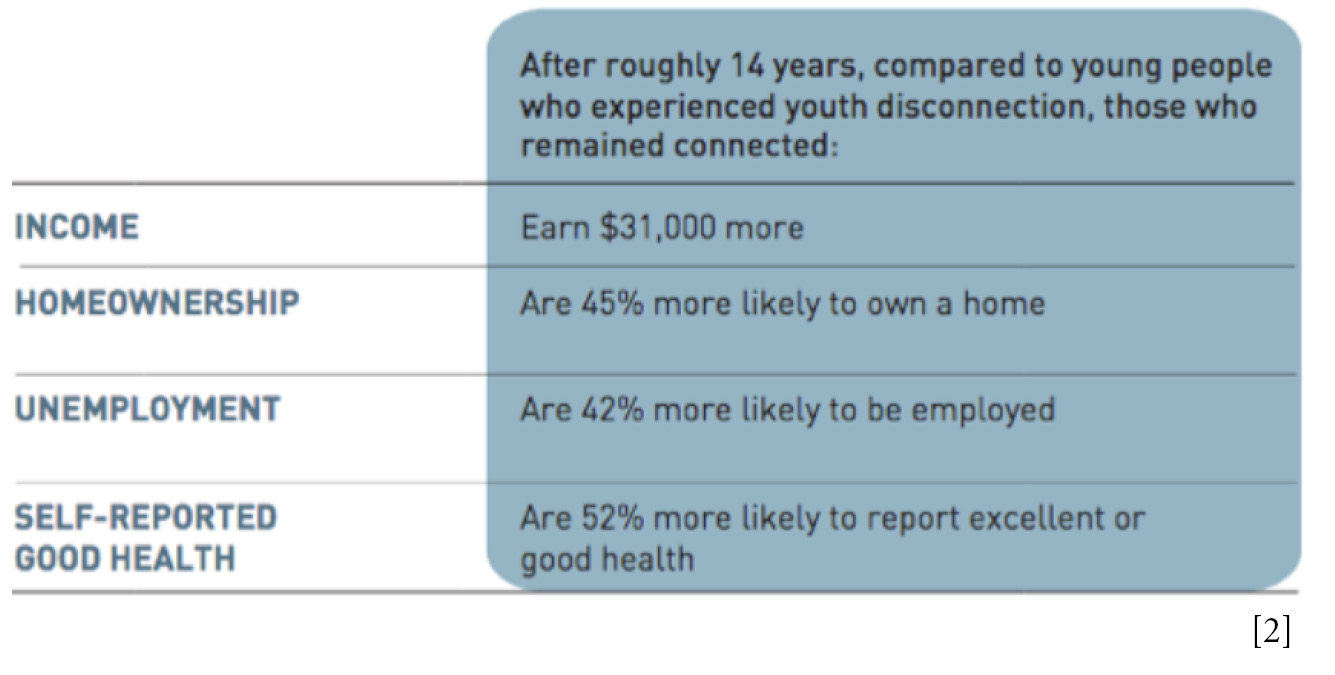 Guest Blogger Molly Young – Facilitator, Austin Opportunity Youth Collaborative / Systems Alignment Consultant
Guest Blogger Molly Young – Facilitator, Austin Opportunity Youth Collaborative / Systems Alignment Consultant
“Opportunity Youth” are young people ages 16-24 who have disconnected from, or are loosely connected to, education and employment pathways. Disconnection is a growing epidemic in our nation and solutions must be found to allow young people to find their pathways to success. As the facilitator of the Austin Opportunity Youth Collaborative (AOYC), a collaborative of youth-serving organizations, government entities and community-based organizations focused on systems change, I have seen firsthand how youth in the Austin community are disconnecting in large numbers.
I have a professional calling to improve education and employment systems, and it is also a very personal mission. You don’t need to know my whole life story, but I will tell you that I was a young single mom who managed to navigate the complex systems of higher education on my own to get multiple degrees. More importantly, I am the proud mother of a 24-year-old daughter who is currently navigating those same systems. Our experiences are 20+ years apart yet my daughter has experienced all the same challenges to success that I did, and more. She has run into one barrier after another with everything from registration holds to a lack of course availability and professors she simply does not understand. Her journey has been an extremely frustrating one. She has thrown her hands up multiple times only to realize that a degree is something she needs for long-term success. She is trudging through on the long route, and I know that she will eventually achieve her goals because she has the resources, drive and grit behind her. She’s pretty darn spunky! However, so many students who start a post-secondary journey are failing to complete a credential, and they walk away with very few opportunities for the future but with a debt bill that drags them down for decades.
As a result of these personal experiences, I see that most post-secondary education options are not set up to help young people succeed. There are antiquated policies in both the education and workforce systems that don’t match with today’s fast-paced, information-driven world, and only the most resourceful, prepared and agile students are finding their way forward.
Where does that leave young people who want to build good lives for themselves? What about first-generation college students who don’t have a parent that can help them find their way through the journey? What about those who leave high school without the academic and social skills they need to be successful in a college environment? What about those who just need a little extra boost academically or financially to find their way?
The recent E3 3D: College and Career Entry in Central Texas, and the companion report “Who is prepared for Future Jobs: Postsecondary and Career Outcomes for a Cohort of Ninth Graders,” reinforces AOYC work. There is strong evidence to prove that we have both an economic and social imperative to change the systems that create barriers for young people who want to find successful education and employment pathways.
The E3 report echoes our concerns: A lack of education is directly related to a lack of economic success. A recent report from Texas 2036, an initiative aimed at maintaining a strong economic outlook in Texas, highlights the fact that “65 percent of future jobs in Texas will require a certificate, or two- or four-year college degree, yet only about 21 percent of the workforce has achieved those levels of education.” [1] The numbers are getting worse as more and more young people are disconnecting before they receive a credential.
A paper published by Measure America, called Two Futures: The Economic Case for Keeping Youth on Track, argues that “one of the most important indicators of a community’s health, is the degree to which its youth and young adult population is adequately furthering their educations and securing positions in the working world.” We also know that low-income students are disproportionately impacted by low education outcomes (lower graduation rates, lower enrollment in post-secondary programs), and that lack of connection leads to poor economic outcomes as well as other quality of life dynamics impacting social outcomes.

So, what are we doing about the rampant disconnection? AOYC has been committed to removing systemic barriers for youth for over six years and has recently reaffirmed this commitment with recommendations to move us into 2019. We’ve identified five areas of focus through testimonials from Opportunity Youth themselves, feedback from partner organizations and engagement with the systems that engage the youth in finding their pathways. AOYC staff identified the top two as key focus areas. Workforce Solutions and additional community partners will support the remaining recommendations.
Overview of Recommendations:
- Data Collection and Analysis: Identify population level barriers and corresponding action strategies to remove the impediments
- Post-secondary Connectivity and Practice: Identify barriers to engagement in education
- Pathways to Employment: Identify re-engagement, persistence and upskilling that lead to sustained and meaningful employment
- Resource Coordination: Align youth service providers, social services and training organizations to better share resources and provide practitioner tools
- Community Connectivity, Public Policy and Community Relations: Leverage community connections to continue to connect youth to meaningful civic engagement opportunities and elevate the narrative around Opportunity Youth
Aligning post-secondary pathways and removing barriers to the success of youth is a high-priority goal for AOYC in 2019. Austin Community College has been nothing less than a rock star partner in the work to remove barriers. It would take way too long to list all of the amazing collaborators at ACC, but they deserve kudos for their willingness to listen to new ideas, some of which challenge long-held institutional policies, and work to change the way students engage in ACC programming. We still have work to do, but I want to acknowledge the amazing partnership that has developed with the ACC team, as well as the long-time partnership with the Austin College Access Network (ACAN), a collaborative supported by E3 Alliance. AOYC leaders are part of a meta-network of organizations focused on improving post-secondary education outcomes with systems-level solutions. These Executive Directors of college-support organizations are full of innovative brain power.
Since data is fundamental to systems alignment work, AOYC is driven to use data in developing appropriate strategies for success. We are currently participating in Equity Counts, a project in partnership with The Aspen Institute, Equal Measure, and five other national sites, to create a common agenda for population-level data analysis for Opportunity Youth. The outcomes will provide a more granular level of data that will reveal trends for successful engagement and allow us to dig deeper into the systems that work for Opportunity Youth.
Lastly, AOYC is closely aligning with the work of Austin Metro Area Master Community Workforce Master Plan led by Workforce Solutions Capital Area. The vision for the plan is to “create a workforce system that effectively engages employers, community-based organizations, and educational institutions, empowers residents to more efficiently match employers’ skill needs, and successfully prepares economically disadvantaged residents for family-sustaining careers.” [3] AOYC has aligned its work in the employment area of the Master Plan, by designing programs that secure opportunities for experiential and work-based learning in the three targeted industries: Advanced Manufacturing/Skilled Trades, Healthcare and IT.
If we intend to have a strong social and economic future, we must provide clear pathways to employment opportunities in roles that allow for growth, and we need to support young people through the educational process that leads to their long-term goals. The supports look different for everyone, but it is in our best interest to build systems where access to assistance is easy to navigate. I am committed to this work. The Austin community is committed to this work. Together we can do great things. Onward!
If you would like more information about the Austin Opportunity Youth Collaborative or other systems change work in the education and employment arena, contact Molly Young at texmolly@gmail.com.
E3 Alliance produced the E3-3D: College and Career Entry in Texas on November 27, 2018. To access the information and program, click here. E3 has also produced several reports as a result of studies funded by the Michael and Susan Dell Foundation. Click on the links below to access the reports.
Does High School Matter? An Analysis of Secondary Outcomes for a Cohort of Ninth Graders
Who is Prepared for Future Jobs? Postsecondary and Career Outcomes for a Cohort of Ninth Graders
[1] Texas 2036, Georgetown Center on Education and the Workforce; Houston Endowment
[2] Measure America, Two Futures: The Economic Case for Keeping Youth on Track, 2018
[3] Austin Metro Area Master Community Workforce Plan (Master Plan)








